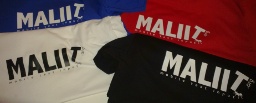I win the prize for last-to-write-about-conference, hands down. I had enough time to come up with solid excuses of course: Right after GNOME.Asia Summit in Seoul I went on to Tokyo, for two more conferences. And after that, I've been busy with my vacations.
With a direct flight from London (LHR) to Seoul (ICN), I was lucky enough to fly on Korean Air. Only Quatar Airways comes close in terms of service, though I still like their aubergine-colored uniforms more. Incheon Airport won a "best airport" award several times in a row, and I think it's well-earned. It starts with the gorgeous view when flying in, but the best argument going for the airport is probably A'REX, an affordable, fast and reliable railway line that connects Icheon with the most important spots in the city. Taxi drivers will try to convince you otherwise but don't be fooled, there's no competition to that line.
I stayed near Hongik University station, which is serviced by A'REX. It's a great location, especially at night. Tristan, our famous GTK+/Glade (and now also EDS) hacker, decided to stay nearby so we could go out for drinks and cure my jetlag with great food and a hangover. The hangover didn't happen (too much food?) and neither did the jetlag. As I arrived a couple of days early, I had enough time to discover the city a bit and prepare for the conference (read: slides and stuff). My talk about Wayland input methods seemed to be well received. It lead to a couple of good discussions about text input in general.
The venue was difficult to find in this maze of office buildings. It was good to see old & new friends at the summit though I had hoped for a lot more attendees. Perhaps (local?) advertising the event at universites would have helped. At least in my perception, the target audience for F/OSS development have always been students with enough spare time on their hands to try out stupid things (such as writing free software). I have come to prefer 3-day conferences over 2-day conferences. Two days just doesn't allow for enough hallway discussions as your time to attend talks is very limited. Spreading talks out over three days gives me a better opportunity to balance between talks and hallway track. I wish for instance that FOSDEM wasn't crammed into two days. The other extreme are probably Akademy and GUADEC that go over a week if you count BoFs and workshops as part of the confernence. But I am pretty sure that two days are too short ;-)
Thanks to the GNOME Foundation for 1) accepting my membership \o/ 2) approving my travel sponsorship. This would not have happened without my talk being accepted, which as I understand from talking to others who submitted session proposals was a quite lucky circumstance on its own.





